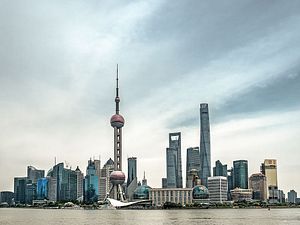The Shanghai stock market’s 20.1 percent year-on-year bull run may have been a surprise to many market watchers but it has its roots in a familiar range of policies periodically wheeled out by Beijing to breathe life into the economy.
In January 2016, few would have forecast a sustained pick up in the Shanghai index. That month saw the biggest sell-off on the Shanghai market for seven years, which wiped 22.6 percent off the value of the indices — China’s largest. Prospects for the economy looked bleak.
Sure enough, China’s government stepped in during February 2016 and released a stimulus package similar to previous years that pumped RMB 700 billion ($102 billion) into the economy through a reserve requirement ratio (RRR) cut and committed RMB 4.7 trillion ($684 billion) to infrastructure projects.
State authorities tightened housing market policy at the same time, forcing investors to look elsewhere for yield, putting historically low valuations on the Shanghai exchange in focus and marking the start of a state-prompted year-long bull run.
While the rebound has been wide-ranging, the main beneficiaries of the stimulus package have been the following five sectors, which have strong government links and account for approximately 45 percent of the total capitalization of the index:
Banking: China’s banks have been the best performing sector over the past 12 months, with stock prices for the big four banks posting significant gains, including a 37.1 percent year on year (y-o-y) increase for Agricultural Bank of China, 27.7 percent for China Construction Bank, 21.32 percent for Bank of Communications, and 16.9 percent for Industrial and Commercial Bank. The gains were bolstered by an improving economic outlook, diminishing concerns over loan quality, strengthening profit prospects as interest rates rise, and relatively attractive dividend yields compared to other sectors.
Oil and Gas: China’s largely state-owned oil and gas companies have also had a storming year in 2016, riding the rebound in oil prices following OPEC cuts at the end of 2016 and cutting costs by shutting down inefficient capacity. These factors, coupled with the improving economy, pushed a 31.7 percent y-o-y increase in sector leader China Petroleum & Chemical Corp’s stock by the end of February.
Mining: China’s improved outlook, reforms to its coal pricing system, plus growth elsewhere in Asia, juiced prices for core commodities in 2016, with iron ore, coal, aluminium and copper all rebounding through 2016. This was a huge boost for China’s many mining companies, with Jiangxi Copper growing 45.5 percent y-o-y and Molybdenum Luoyang jumping 58.9 percent y-o-y by the end of February 2017.
Construction: The Chinese government’s huge commitments to infrastructure projects and its continuing pursuit of its “One Belt, One Road” strategy have been music to the ears of investors looking at construction companies. Bellweather stocks such as China Railway Group saw a a 19.8 percent y-o-y boost and China State Construction and Engineering got a huge 71.7 percent y-o-y stock price increase by the end of February 2017.
Capital Markets: Brokerage firms, such as Guotai Junan (up 13.1 percent y-o-y) China Merchants (up 15.8 percent y-o-y), have benefited from the sentiment rebound and the introduction of the Hong Kong Stock Connect systems. They look set for a bumper year in 2017, with market regulators signaling a pick-up in IPO approvals, with analysts expecting that IPOs in 2017 will reach a six year high of RMB 225 billion, according to a Bloomberg survey.
New sources of capital have also helped to boost stock markets. The expansion of the Stock Connect to Shenzhen, building on the previously announced tie-up with Shanghai, has brought overseas investment to Chinese exchanges. Government clearance for national pension funds to invest in domestic exchanges has also made an estimated $100 billion of funds available for investment and has boosted markets in February.
Looking further into 2017, investors are growing increasingly bullish about the Shanghai index and Morgan Stanley is predicting the market will reach 4,400 by the end of 2017, a 35.7 percent increase from current levels.
Morgan Stanley’s prediction rests on the potential for new economy stocks, including the information technology, consumer, and healthcare sectors, plus improving earnings to push the index through the 4,400 barrier.
Despite these bullish prospects, the Chinese government is getting serious about tightening. New controls on land purchases and capital raises, together with sales restrictions, will keep the housing market under control in 2017, while interest rates are on the rise amid concerns about rising inflation.
With the hand of the government still dictating the economy, its best to look to China’s National People’s Congress and People’s Political Consultative Conference meetings, scheduled to start on March 5 for ideas, as to what the government has planned for this year. With major changes in senior government personnel, and rumors of new policies to combat China’s demographic crisis, this year’s meetings could well be pivotal for China’s development in the next five years. I will be covering it in depth in my next piece.

































